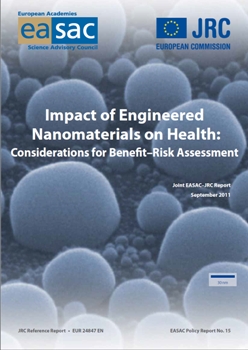According to two reports on nanotoxicology, most of the studies conducted in the past ten years mainly focused on the application of nanomaterials rather than their risk to human health and environment.
 Cover of the European Academies Science Advisory Council report
Cover of the European Academies Science Advisory Council report
The knowledge on the subject is very little and more critical studies needs to be conducted to fill the voids, which are quite large in some instances. However, the major barrier to conduct key studies in the nanotoxicology field is the non-availability of experts.
Harald Krug, an Empa Toxicologist who significantly contributed to the reports, concluded based on his decade of study in the nanosafety field that so far no risks were witnessed related to the use of neither nanoproducts nor free nanoparticles. However, although there is no solid proof associated with the harmful effects of synthetic nanoparticles, companies planning to sell their nanoproduct must have a look on its complete life-cycle, right from the production to use to disposal or possible recycling, Krug added.
One report released by the Chemical Industry Association and the German Society for Chemical Engineering and Biotechnology provides a synopsis about the major research studies, including 25 European Union, 1 US, 40 German and 6 Swiss projects, carried out in the past ten years on the nanosafety field. In one of these studies, the Cantonal Hospital of St Gallen and Empa examined the possibility of entry of nanoparticles into the human placenta and to the circulatory system of an unborn child and discovered that particles having a diameter of 200-300 nm were able to enter into the fetal bloodstream. Here the toxic effects of the nanoparticles on placental tissue and on the unborn child need to be analyzed. The findings also revealed the possibility of nanoparticle-based drug delivery systems to perform target-specific treatments to the unborn child.
In the second report that was introduced recently in Brussels, the European Academies Science Advisory Council focused on the lack of knowledge in the nanotoxicology field and emphasized the need to carry out research studies that enable the direct use of nanomaterials without causing damage either to the human health or to the environment.